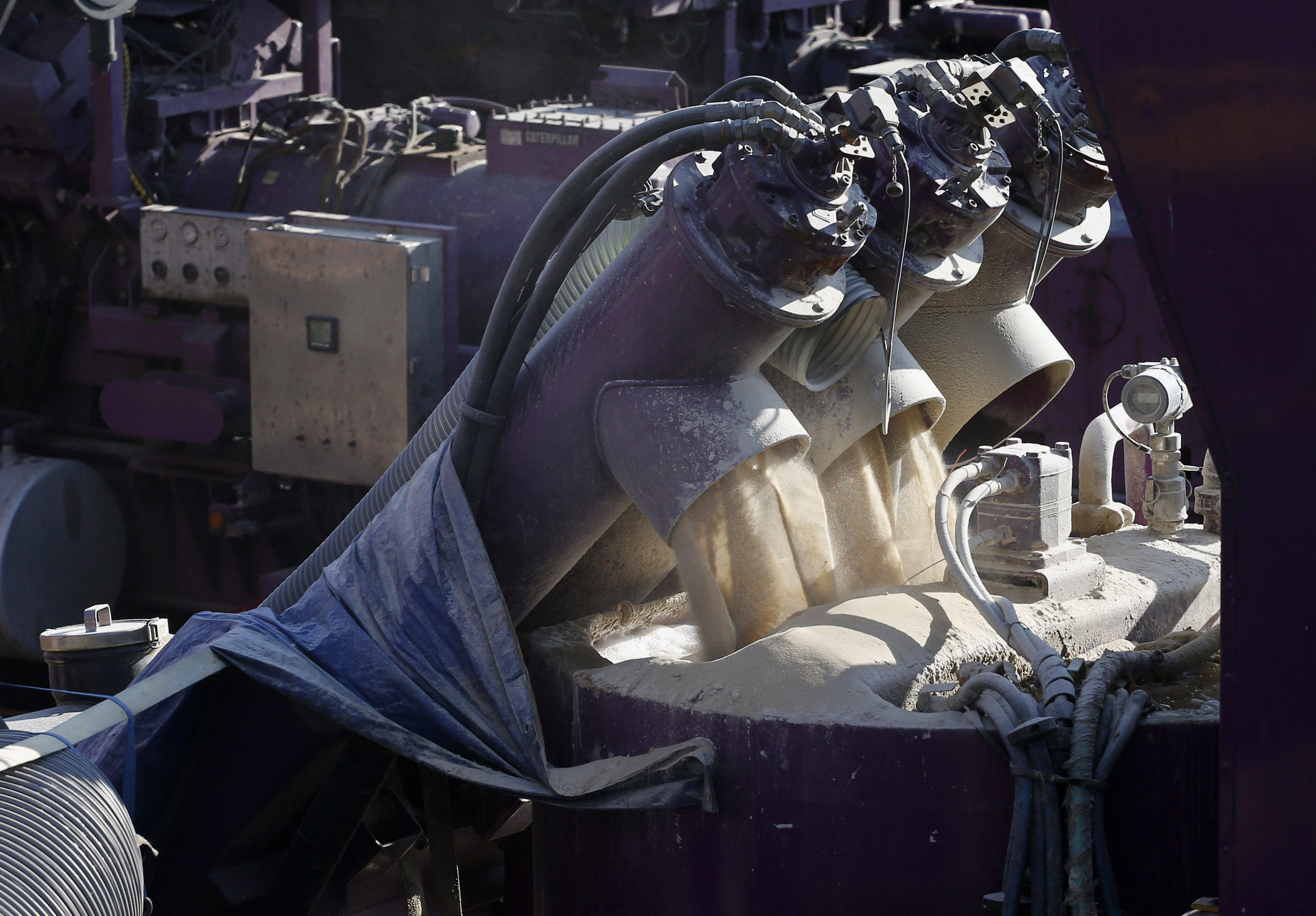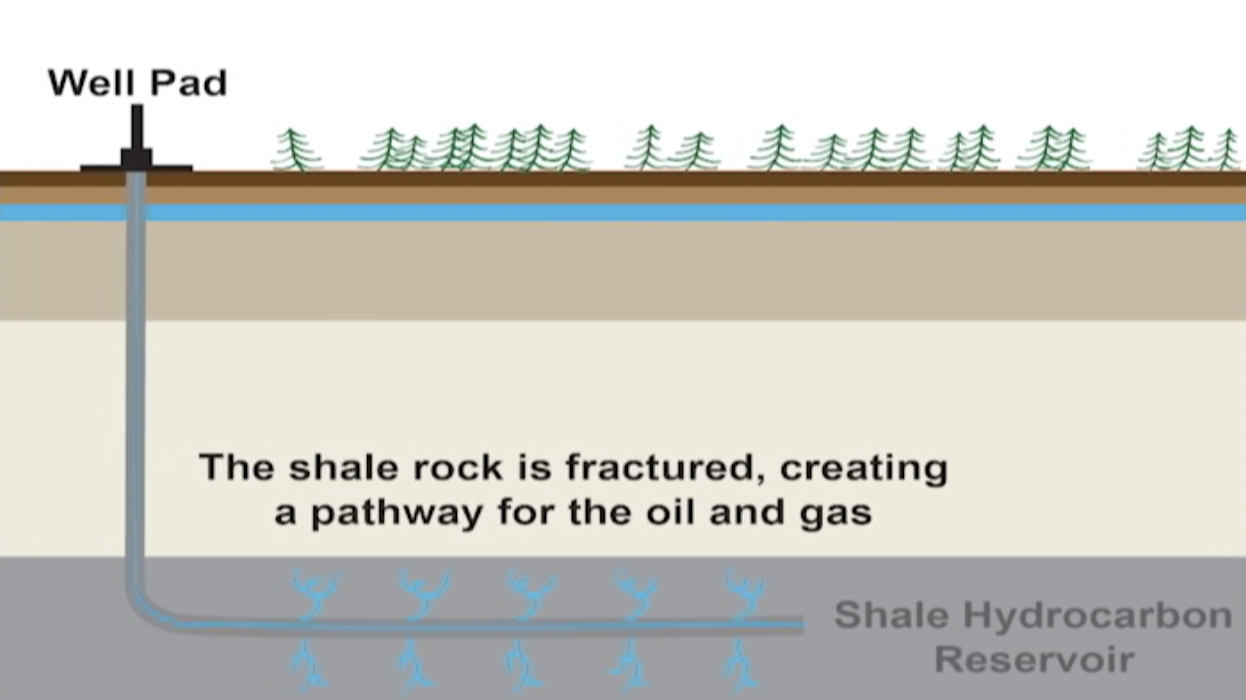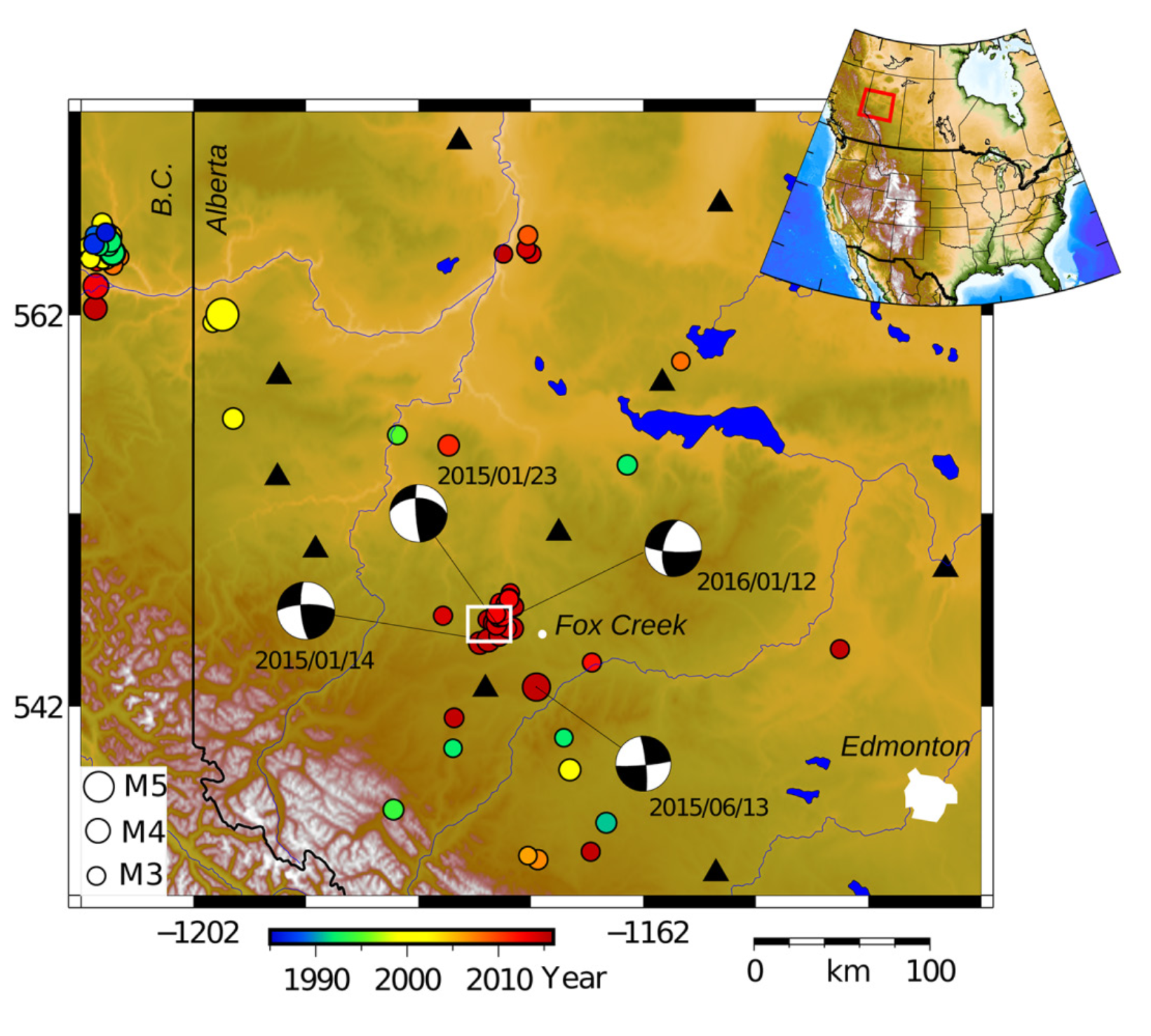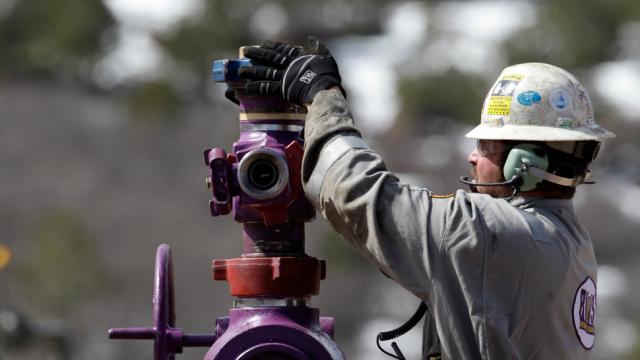It’s generally believed that hydraulic fracturing is behind the recent spate of earthquakes in regions not usually associated with seismic activity, but the underlying processes are still poorly understood. New research from Canada strengthens the link between the two, showing how the controversial practice can produce persistent earthquakes even after fracking has ended.
A worker switches well heads during a pause in the water pumping phase at the site of a hydraulic fracturing operation in Colorado. (Image: AP)
A new study published in the journal Science shows that in western Canada and perhaps elsewhere, human-induced earthquakes are tightly clustered near hydraulic fracturing sites, and that the buildup of stress caused by injecting fluid deep underground can produce periodic earthquakes that can last for months after operations have ceased. These insights could help regulators and oil industry officials craft practical guidelines to limit the damage inflicted by these quakes.
Before we get into the details of this study, it’s important to make a distinction between two different forms of human-induced earthquakes: One that’s related to hydraulic fracturing, or “fracking”, and one that isn’t. The rash of quakes that are happening in the US midwest are likely the result of disposing oil and gas field wastewater deep underground, which is not related to fracking (a common mistake made by the media). The current study, led by researchers Xuewei Bao and David W. Eaton from the University of Calgary, considered seismic events related specifically to hydraulic fracturing. Consequently, the new paper doesn’t speak to what’s going on in the US midwest.

Hydraulic fracturing involves the injection of water and other additives deep underground where the resulting high-pressure causes cracks to form in the shale rock, allowing precious oil and gas to trickle into a wellbore. This fluid is channelled into highly permeable layers, leading scientists to speculate that the resulting pressure is local and close to the injection site, thus minimising the chances of earthquakes happening elsewhere, or even at all. The new study shows this is a misconception, and that the resulting pressurisation is both intense enough, and long-lasting enough, to influence nearby faults and produce periodic earthquakes that can last for months.

Graphical representation of hydraulic fracturing, or “fracking.” (Image: Xuewei Bao and David W. Eaton)
“Sedimentary rocks contain small spaces between grains (pores) that almost always contain some type of fluid — water, oil or natural gas,” Eaton told Gizmodo. “Increasing the pressure of the fluid within the pores can influence the behaviour of a rockmass, especially if there is a fault.” This pressure can “migrate” into neighbouring fault zones in a process known as diffusion. “This is much the same as the transport of heat from a hot area to a cold area,” explained Eaton.
So while previous studies suggested a link between hydraulic fracturing and induced seismicity, the new study actually drills deep (so to speak), showing the exact structures and processes that enable the mechanisms of fault triggering.
For the study, the researchers analysed data from four seismograph stations near six drilling sites close to Fox Creek, Alberta. They monitored intermittent quakes between December 2014 and March 2015, including a magnitude 3.9 tremor that took place on 23 January 2015.

Earthquakes were tightly clustered in both space and time near hydraulic fracturing sites. The bigger the dot, the bigger the earthquake. (Image: Xuewei Bao and David W. Eaton)
This particularly strong earthquake happened two weeks after the completion of nearby hydraulic fracturing. Further analysis of a well pad nearby showed that workers pulled up an unusually low amount of fluid, meaning that much of it remained deep underground, resulting in the sustained pressurisation of a fault zone. The high pressure migrated into other nearby fault zones, including some already under stress and close to failure. The researchers say these are the likely factors behind the ensuing earthquake activity.

A map of seismic activity below a well pad. The straight horizontal lines represent the wellbore, and the big blue blotch represents the pore pressure. The dots show where seismic activity was detected, with the big red circle representing a 3.9 magnitude event that occurred on 23 January 2015. (Image: Xuewei Bao and David W. Eaton)
The new study shows that, while stress-related earthquake triggering diminishes once fracking activities come to a halt, any fault that remains under fluid pressure is still susceptible to persistent quakes in the weeks and months that follow. What’s more, stress changes during fracturing operations can trigger fault slips up to a kilometre away, even when the injection is done in highly permeable layers.
Importantly, these fracking-induced quakes appear to be unique to western Canada, so it’s difficult to make inferences to similar operations elsewhere, or to the practice of wastewater injection. Consequently, these results suggest that a one-size-fits-all approach does not work for all oil and gas operations.
“Our hope is that this study will contribute to science-informed regulations and public discourse, as well as improved risk assessment and mitigation strategies by industry,” said Eaton.
[Science]
